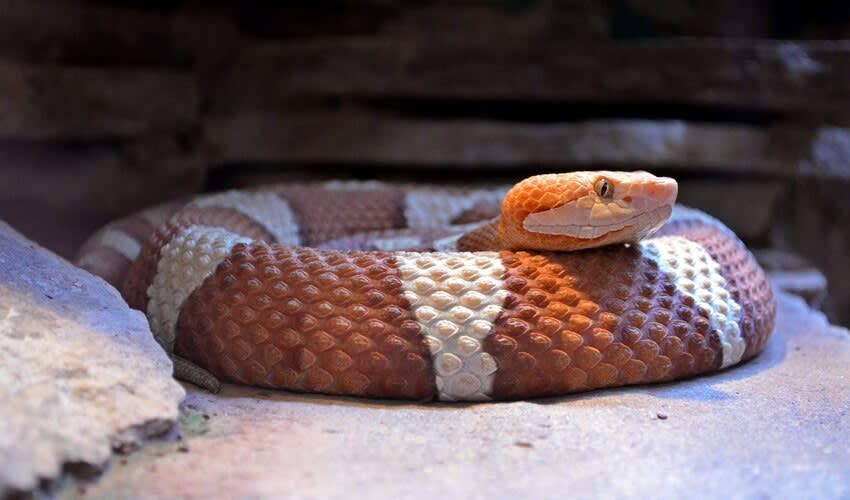Agkistrodon – Pit vipers
Also known as American moccasins; endemic to North America
A genus of pit vipers that are indigenous to North America and include species such as the cottonmouth, also known as the water moccasin and the copperhead. These snakes are named for the distinctive heat-sensing pits between their eyes and nostrils on either side of their head. This adaptation is characteristic of the pit viper family. These pits are susceptible to changes in temperature, allowing the snakes to detect warm-blooded prey even in the dark.
These snakes are quite versatile when it comes to their habitats. They can be found in various environments, from rocky and forested hillsides to marshes and swamps, showcasing their adaptability. Cottonmouths have a particular affinity for water and are often associated with aquatic environments, while copperheads tend to favor drier habitats. Despite their different preferences, both species are skilled at navigating their surroundings and can even be found in areas disturbed by human activity, such as construction sites, piles of rotting wood or sawdust, and, occasionally, suburban neighborhoods.
Agkistrodon snakes are equipped not only with heat-sensing capabilities but also with venom that they use to hunt and immobilize their prey, which includes small mammals, birds, amphibians, and even other snakes. Despite their venomous bite, they are generally not aggressive towards humans unless provoked or threatened.
Species in this genus
Agkistrodon piscivorus cottonmouth
They are called cottonmouth for their fluffy white mouth insides that they show out when threatened
Eastern copperhead
Easily recognized by their distinctive hourglass-shaped bands, which are often brown or reddish-brown



